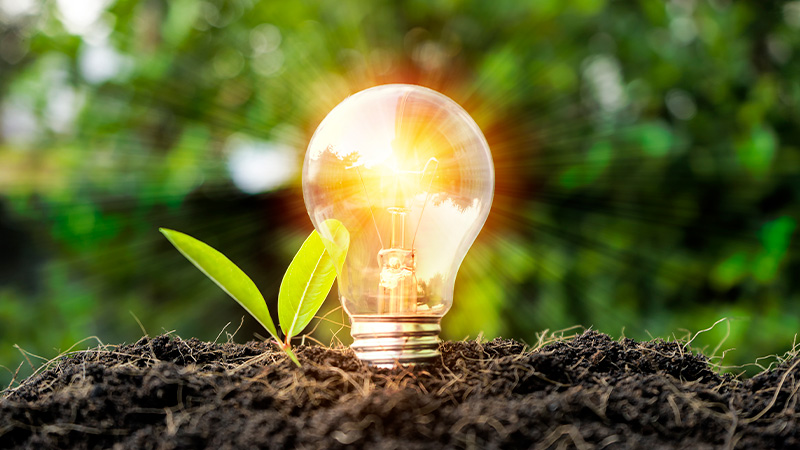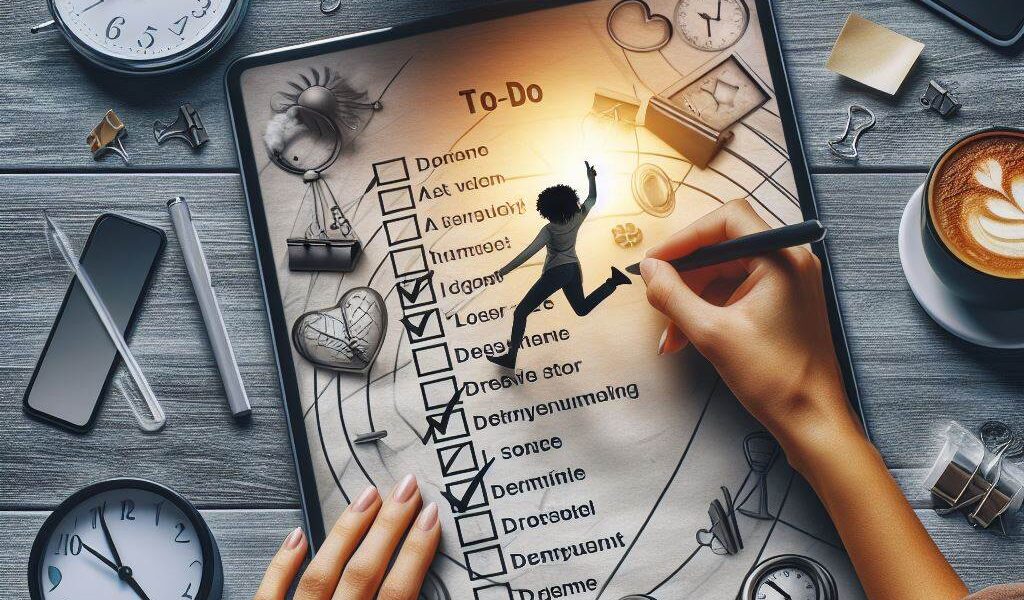Exploring the Colossal Solar Projects Powering Our Future
A Journey Through the Vastness of Solar Ingenuity
Prof. Aécio D’Silva, Ph.D.
Large-scale solar power plants are facilities that generate electricity from sunlight using photovoltaic panels or concentrated solar power systems
Large-Scale Solar Power – The quest for renewable energy has led to the creation of awe-inspiring solar energy projects across the globe. These projects are not only marvels of engineering but also beacons of hope for a sustainable future. In this blog, we’ll explore the benefits and challenges of large solar energy projects in the world, their impact, and the promise they hold.
This article is a glimpse into the monumental efforts being made in harnessing solar en
Author: Amds
Navigating Workplace Disagreements: When You Know It Won’t Work
Understanding Conflict Resolution When You Disagree with Your Boss
Prof. Aécio D’Silva, Ph.D. e Equipe
AquaUniversity
Navigating Workplace Disagreements – Conflicts in the workplace are inevitable, but they can be particularly challenging when they involve disagreement with your boss. How do you handle a situation where you’re certain that your boss’s directive won’t yield the desired results?
This Intelligent Collaborative post provides a comprehensive guide to handling disagreements in the workplace, particularly with those in positions of authority. It’s designed to help professionals approach such situations thoughtfully and effectively.
Read moreCultivating Intelligent Collaboration: The Path to Excellence and Innovation
Unleashing Potential Through Synergy of Minds in the Working Environment
In a world where change is the only constant, businesses that thrive are those that adapt through a culture of collaboration, excellence, and innovation
Prof. Aécio D’Silva, Ph.D
Cultivating Intelligent Collaboration – In today’s fast-paced business environment, staying ahead of the competition requires more than just a good product or service. It demands a workplace culture that embraces intelligent collaboration, pursues excellence relentlessly, and fosters continuous innovation. This blog explores practical strategies to cultivate such a culture within your organization.
Intelligent Collaborative Leadership: The Art of Communicating with Empathy – to Say What Should Be Said and Not What One Wants to Hear
Intelligent Collaborative Leadership: The Art of Communicating with Empathy – to Say What Should Be Said and Not What One Wants to Hear
Business Administration Beyond Comfort Zones
Cultivating Leadership That Values Necessity Over Comfort
Prof. Aécio D’Silva, Ph.D
Discover the transformative power of leadership that prioritizes essential truths over comfortable platitudes
Communicating with Empathy – In the realm of effective leadership, the ability to communicate what is needed rather than what is wanted stands as a pivotal skill. This form of communication fosters an environment of growth, trust, and long-term success for both leaders and their teams.
Read moreStrategies for Conquering Remote Work Challenges with Distributed Teams
Strategies for Conquering Remote Work Challenges with Distributed Teams
A comprehensive guide to maximizing productivity and engagement in a remote workplace
Remote work is the future, but it comes with unique challenges. Discover here proven strategies for building a thriving remote team and navigating the hurdles of distributed workforces
By Aécio D’Silva, PhD(1), Maécia Moura, MSc(2), Fabiano Moura, MSc(3)
The rise of remote work has revolutionized the modern workplace, offering flexibility and redefining traditional office environments. However, the remote work landscape presents distinct challenges for managers and team members alike. The authors of this text are executives who have virtually all of their teams working remotely. We will describe the daily challenges and how we overcome them to achieve success in managing remote work teams.
Elevating Business Success: The Power of Positive-Creative Attitude with Empathy
The Benefits of Positive-Creative Leadership with Empathy in Your Business
In Today’s Competitive Business Landscape, Fostering a Positive-Creative Attitude with Empathy in Your Workplace is the Fuel That Propels Companies to New Heights of Innovation and Success
Prof. Aécio D’Silva, Ph.D
Positive-Creative Attitude with Empathy – In today’s fast-paced business world, success hinges not just on what you do, but also on how you think. A positive-creative attitude is increasingly recognized as a critical driver for business success, fostering an environment where innovation thrives, and challenges are viewed as opportunities.
Unraveling Nature’s Mysteries: The Golden Ratio and Fibonacci Sequence
Is God a Mathematician?
Discovering the Mathematical Patterns That Shape Our World -Explore the Fascinating World of the Golden Ratio and Fibonacci Sequence, Where Mathematics Meets Nature’s Artistry
Prof. Aécio D’Silva, Ph.D
The Golden Ratio and Fibonacci Sequence – Mathematics is often viewed as a collection of numbers and equations confined to textbooks, but its true beauty lies in its prevalence in the world around us. Two mathematical concepts that exemplify this are the golden ratio and the Fibonacci sequence—patterns that appear in the most unexpected places, from the DNA, the bees, and the petals of a flower to the spirals of galaxies.
Reviving the Giants: The Journey to Resurrect the Woolly Mammoth
Unraveling the Science Behind De-Extinction and Genetic Engineering
Prof. Aécio D’Silva, Ph.D. and Team
Resurrect the Woolly Mammoth – In a groundbreaking feat of science, we stand on the brink of reviving a species that vanished from the Earth over 4,000 years ago. The woolly mammoth, a majestic creature of the Ice Age, could once again walk the tundra. But how is this possible? The answer lies in the cells of its closest living relative, the Asian elephant, and the wonders of genetic engineering.
Understanding Prostatitis: A Comprehensive Guide
Navigating Through the Complexities of Prostate Inflammation
Prof. Aécio D’Silva, Ph.D.
Prostatitis is a common yet often misunderstood condition affecting the prostate gland. This guide aims to demystify prostatitis by exploring its classifications, symptoms, triggers, and treatment options.
Prostatitis is an inflammation of the prostate gland, a walnut-sized organ located below the bladder in men. It can lead to various urinary and pelvic symptoms, significantly impacting quality of life. Understanding prostatitis is crucial for effective management and treatment.
Hydrogen Fuel Cell Cars: How a Fuel Cell Vehicle Works
A Guide to The Technology, Benefits, And Challenges of Hydrogen-Powered Vehicles
Prof. Aécio D’Silva, Ph.D. and Team
Hydrogen fuel cell cars are a type of electric vehicle that uses hydrogen as a fuel to generate electricity on board. Unlike conventional electric vehicles that rely on batteries to store electricity, hydrogen fuel cell cars produce their own electricity using a device called a fuel cell. In this Collaborative Intelligence post, we will explain how a fuel cell vehicle works, what are its advantages and disadvantages, and what are the prospects and barriers for its adoption.
Green Business: A Catalyst For Economic, Social, And Environmental Change
Green Entrepreneurship, Pushing the Sustainability Development, Improving Quality of Life and Transforming Urban and Rural Areas Reality
Prof. Aécio D’Silva, Ph.D.
Green business is a term that refers to any business that runs in a way that minimizes its negative impact on the environment while maximizing its positive impact on society. Green business can be a catalyst for economic, social, and environmental change, by creating jobs, micro-business, and entrepreneurship, pushing sustainability development, improving quality of life, and transforming urban and rural areas reality. In this Collaborative Intelligence post, we will explore the benefits, challenges, and opportunities of green business, and how it can contribute to a more sustainable and inclusive future.
The Role of Top Sustainable Technologies in Improving Quality of Life and Radically Transforming Cities’ Reality
How cities’ leadership can improve the quality of life for residents by fomenting top sustainable technologies to improve and transform education, health services, transportation, local renewable energy production, waste management, public safety, and many other sectors
Prof. Aécio D’Silva, Ph.D.
Sustainable Technology – Cities are the hubs of innovation, culture, and economy, but also the sources of many environmental and social challenges. As the world’s population and urbanization continue to grow, cities face increasing pressures to provide adequate and equitable services and opportunities for their residents, while reducing their ecological footprint and enhancing their resilience. To achieve this, cities need to embrace and adopt top sustainable technologies that can help them transform their reality and improve their quality of life.
The Potential and Challenges of Applying Human-AI Collaborative Intelligence
How Humans and Machines Can Work Together To Solve Complex Problems and Create Value
Prof. Aécio D’Silva, Ph.D
In many of my collaborative intelligence leadership publications, I’ve underscored the benefits of collaborative intelligence as a pathway to attaining total excellence. Beginning with the truth that “we” collectively possess greater intelligence than “I” alone. Presently, we’re faced with a more intricate and demanding task: exploring the potential and hurdles of human-AI collaboration in practical settings. Human and AI collaborative intelligence is the idea that humans and artificial intelligence (AI) systems can combine their strengths and capabilities to achieve better outcomes than either could alone. It is based on the premise that humans and machines have complementary skills and abilities and that by working together, they can enhance each other’s performance and learning. In this blog post, we will explore what human and AI collaborative intelligence is, how it works, and what are some of the potential benefits and challenges of this approach.
The Power of Commemorating and Thanking God for Each and Every One Accomplishment, Advancement or Breakthrough in Your Life
How gratitude can transform your life and bring you closer to God
Prof. Aécio D’Silva, Ph.D.
Gratitude is more than just a feeling or an attitude. It is a powerful spiritual practice that can change your life and bring you closer to God. When you commemorate and thank God for each and every one accomplishment, advancement, or breakthrough in your life, no matter how small or big it seems to be, you are acknowledging His presence, His provision, and His purpose in your life. In this Collaborative intelligence post, we will explore the benefits of gratitude, the ways to practice gratitude, and the challenges of gratitude.
Have you ever taken a moment to reflect on the blessings in your life and express gratitude to God for all He has done? When we intentionally cultivate a spirit of thankfulness, we can see God’s hand at work in all things and experience a greater sense of peace and joy. The Bible tells us to “give thanks in all circumstances; for this is God’s will for you in Christ Jesus” (1 Thessalonians 5:18, NIV). But why is gratitude so important, and how can we practice it in our daily lives?
Organoids: The Future of Medicine
How these mini-organs can revolutionize disease research and treatment
Prof. Aécio D’Silva, Ph.D
Organoids are tiny, self-organized 3D tissue cultures that can mimic the structure and function of real organs. They have the potential to transform medical research and offer new hope for patients with various diseases.
Have you ever wondered what it would be like to have a miniature version of your own organs, such as your brain, heart, or liver, growing in a lab? Sounds like science fiction, right? Well, not anymore. Thanks to the advances in stem cell technology, scientists have been able to create organoids, which are essentially 3D models of organs derived from stem cells. Organoids can replicate some of the complexity and diversity of real organs, making them ideal tools for studying human development, disease, and drug response. In this blog post, we will explore what organoids are, how they work, and how they can help us treat diseases in humans.
Price’s Law vs. 80/20 Rule: How to Understand and Apply These Principles to Your Business Success
Price’s Law and the 80/20 Rule are two concepts that describe the distribution of productivity and performance in various domains. Learn what they are, how they differ, and how they can help you optimize your business outcomes
Prof. Aécio D’Silva, Ph.D
Price’s Law and the 80/20 Rule are two principles that can help you understand and improve the productivity and performance of your business. They can help you identify and focus on the most important and impactful factors that drive your business results and eliminate or reduce the ones that waste time and resources.
Unleash Efficiency: How the Pareto Principle Can Boost Your Employees’ Performance
Leverage the power of the 80/20 rule to optimize workflows and unlock hidden potential
Prof. Aécio D’Silva, Ph.D
Feeling overwhelmed by a never-ending workload? You’re not alone. In today’s fast-paced business environment, maximizing efficiency and employee performance is crucial. Enter the Pareto Principle, also known as the 80/20 rule, a powerful tool that helps you focus on the 20% of efforts that yield 80% of the results. Here’s how you can leverage this principle to empower your employees and boost their productivity.
How To Boost Your Employees’ Performance with The Pareto Principle
The Pareto principle, also known as the 80/20 rule, states that 80% of the results come from 20% of the causes. Learn how to use this principle to identify and leverage the most productive and valuable aspects of your employees’ performance.
Prof. Aécio D’Silva, Ph.D
The Pareto principle is a simple but powerful concept that can help you optimize your employees’ performance and satisfaction. It can help you focus on the key factors that drive the most outcomes and eliminate or reduce the ones that waste time and resources.
How Biomimicry Fosters Creativity and Innovation
How combining cutting-edge technology with lessons learned from natural systems, engineers and researchers can create sustainable, intelligent, efficient, and innovative solutions
Biomimicry is the practice of learning from nature and applying its principles to human design challenges. It is a powerful tool for innovation, as it can inspire novel solutions that are both effective and eco-friendly
Prof. Aécio D’Silva, Ph.D
Biomimicry is the science and art of emulating nature’s best ideas to solve human problems. It is based on the premise that nature, made by the intelligent design of the Creator of everyone and everything, has already solved all the challenges we face today, such as energy efficiency, water conservation, waste management, and resilience. By observing how nature works, we can learn from its strategies and adapt them to our own needs.
In this post Intelligent Collaborative of algaeforbiofuels, we discuss why biomimicry is important because it can help us create more sustainable and innovative solutions that are in harmony with the environment. It can also foster creativity and curiosity, as it encourages us to look at nature with a fresh perspective and discover new possibilities. Biomimicry can also enhance our appreciation and respect for nature, as we realize its value and wisdom.
Read moreDepression: The Dark Side of Your Mind
What is depression, how do hormones affect it, and how to cope and overcome it in your life
Prof. Aécio D’Silva, Ph.D
Depression is a common but serious mental disorder that affects millions of people worldwide. It can cause persistent feelings of sadness, hopelessness, and loss of interest in activities that you once enjoyed. It can also affect your physical health, your relationships, and your ability to function at work or school. But depression is not a sign of weakness or a character flaw. It is a treatable condition that can be managed and overcome with faith in God’s help and the right support.
In this Intelligent Collaborative Knowledge post, we will explore what depression is, how hormones play a role in it, and how to cope and overcome it in your life. We will also share some resources and tips to help you or someone you know who is struggling with depression.










